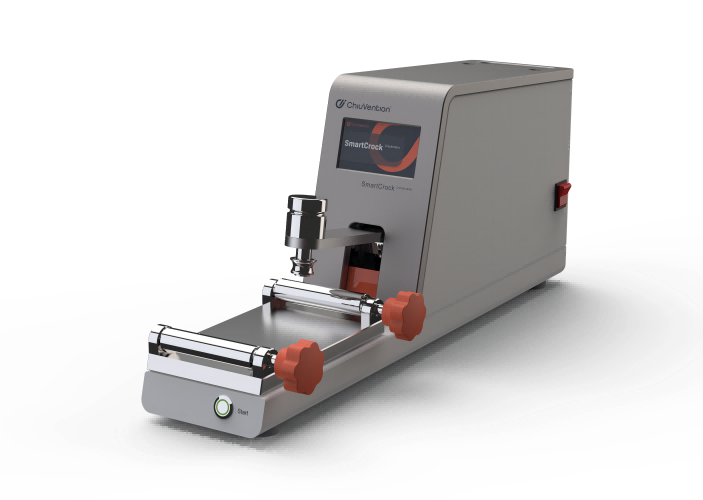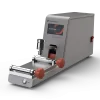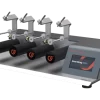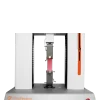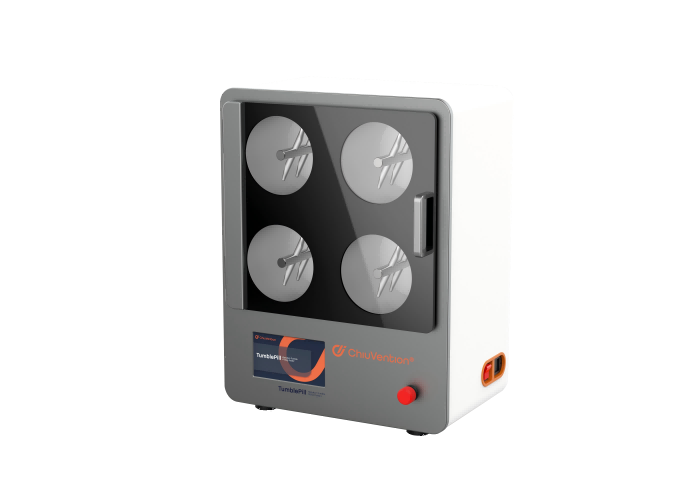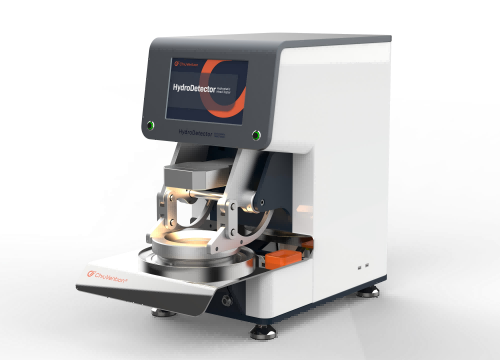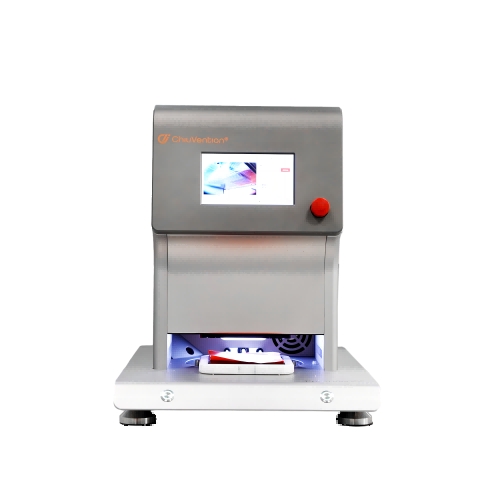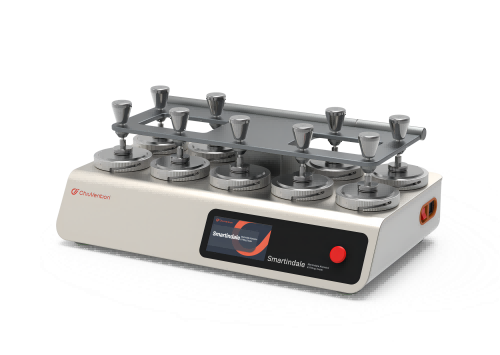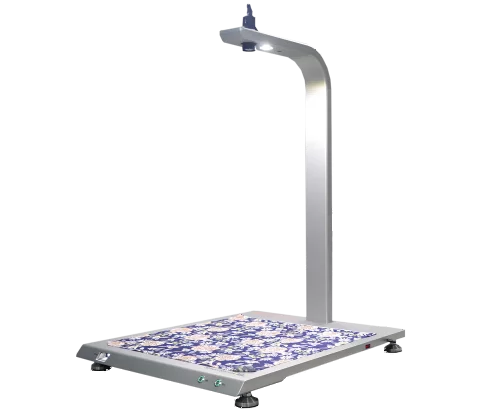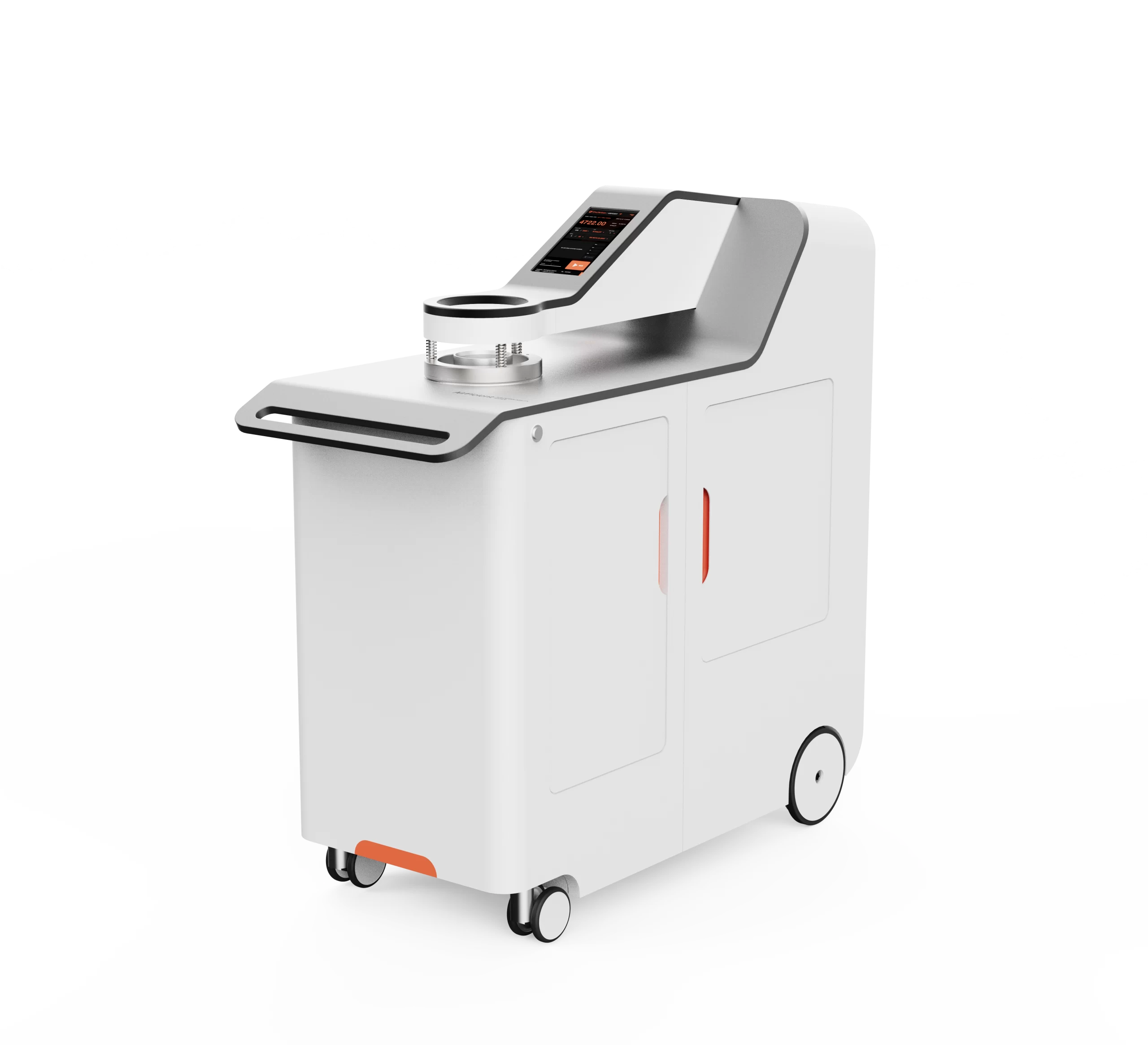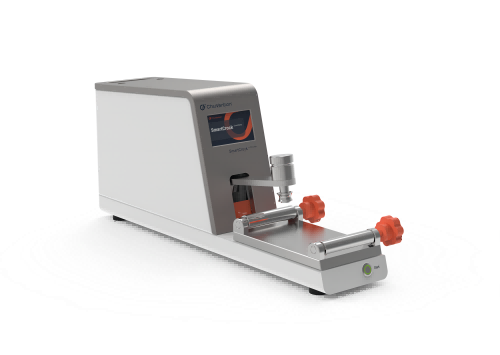
Fully automatic testing is efficient and reliable.
When you load the friction cloth and sample and press start, the friction head will land on the sample. It will then move it back and forth. Then, it will automatically stop and lift up after a set number of times. This reduces the influence of manual operation on the test results. It also makes the test faster and more accurate.
Automatic stretching device for elastic fabrics, more accurate testing
The patented sample clamping and stretching device solves the problem of wrinkles when testing knitted samples: it automatically stretches the samples to the same distance while clamping, avoiding wrinkles or overstretching of the samples and making the test more accurate and reproducible.
Wet and dry friction tests can be performed in a single test, 40% faster.
Only one piece of sample is needed in the direction of warp and weft, and through the innovative flexible platform, the dry and wet friction tests can be completed successively on the same piece of cloth, which saves sampling and loading time and greatly speeds up the test by 40%.
Connected to SmarTexLab, the test results can be uploaded to ERP or LIMS.
The SmartCrock can connect to the SmartTexLab App by ChiuVention Team via Wi-Fi. This allows you to set parameters or track the test from your smartphone. And the test results will be seen in the SmartTexLab, besides, it can be uploaded to the company’s ERP or LIMS. This paperless and intelligent testing makes textile lab quality management easier and faster.
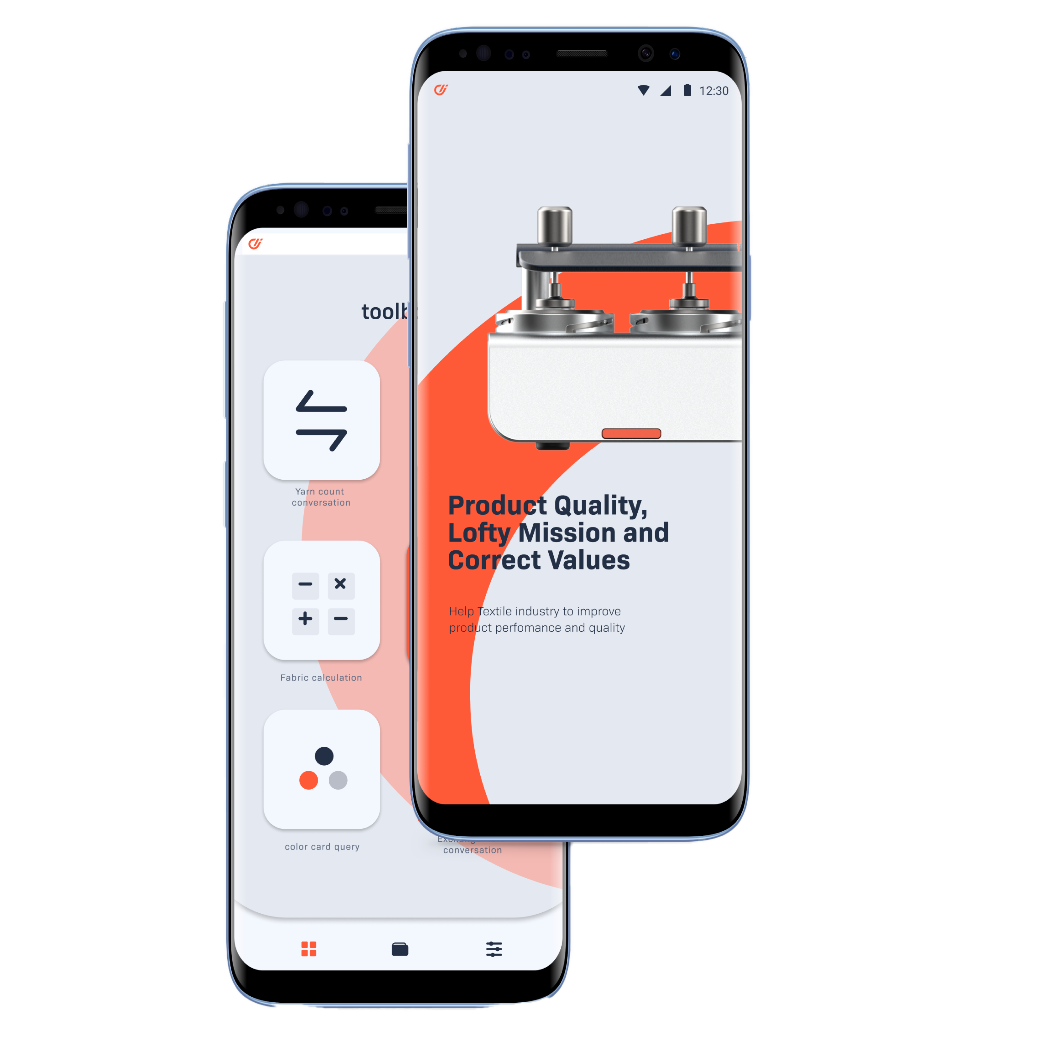

Wet and dry rub tests can be carried out quickly, saving 20% time.
You can hold wet and dry specimens at the same time. The removable loading table lets you quickly switch between the textile’s friction zones. You can perform dry and wet friction tests quickly.
Noiseless and durable.
Moving parts use linear guides. They make the instrument run smoothly and quietly. The main body of the sample table is made of durable aluminum alloy.
Designed in Germany, quality is our life.
All our textile testing instruments are developed in-house and in cooperation with a team of renowned German industrial designers, which makes our instruments of outstanding quality.100% source factory and factory price.
Customer Feedback
“I purchased textile testing instruments from ChiuVention many times. They are good at innovating, such as this Crockmeter, which speeds up our testings.”
“I like this design and functions. It runs smoothly and we can input the test results into the smart system, so it is useful for our lab data management.”
OUR BROCHURE
Crockmeter Test Standards
Standard
ISO 105×12 (round friction head), AATCC 8, GB/T 3920 (round friction head), ISO 20433 Method C;
Optional standard
ISO 105xD02, AATCC 165, ISO 105×12 (rectangular friction head), GB/T 3920 (rectangular friction head)
The Specification of Crockmeter
Friction head, diameter 16 mm
Vertical pressure 9N +/- 10%
Friction stroke 104 mm
Standard accessories
- AATCC friction cloth
- Sandpaper
- Clamping sleeve
- Sampling plate
Optional accessories and consumables
1.AATCC/ISO Friction Cloths
2.AATCC/ISO stained gray card
3. Sandpaper
4 . Rectangular test head with clamping ring
5. Round clamping ring
Power 220 V 50 / 60 Hz Other voltages require an external transformer
Weight 23Kg
Dimension 663*173*250 mm (L*W*H)
Frequently Asked Questions
Dry rubbing test: It is used to assess the color fastness of a material in a dry state, especially in dry rubbing situations that may be encountered in daily wear or use. This test reflects the abrasion resistance of a fabric in a moisture-free environment.
Wet rubbing test: Evaluates the color fastness of a material in a damp or wet condition, usually simulating actual use where it may come into contact with moisture (e.g. sweat, rain, etc.). The wet rubbing test is more revealing of the stability of dyes under humid conditions.
1. Following standardized test methods
Use of international standards: Tests are conducted following international standards such as ISO 105 X12, AATCC 8, and GB/T 3920. These standards provide detailed test procedures, environmental conditions, and equipment requirements to ensure consistent and comparable testing.
Clarify test conditions: Ensure that samples are humidified at the specified temperature (typically 20°C ± 2°C) and relative humidity (65% ± 2%) to ensure a stable test environment.
2. Equipment Calibration and Maintenance
Regular calibration of equipment: Colorfastness to friction test instruments should be calibrated regularly to ensure their measurement accuracy. Use samples of known color fastness levels for verification to confirm the performance of the instrument.
Maintain the friction head: Keep the surface of the friction head flat and clean to avoid inaccurate test results caused by uneven friction head. Regularly check the wear and tear of the rubbing head and replace it in time.
3. Sample Preparation and Handling
Sample Selection: Select representative samples for testing and avoid using materials that are too old or damaged to ensure the reliability of the results.
Proper Sample Handling: Appropriate pre-treatment of samples, such as preheating and humidifying, is performed before testing to eliminate interference due to environmental changes.
4. Data Recording and Analysis
Detailed recording of results: Detailed records of each color’s fastness to the rubbing test result, including sample number, test date, environmental conditions, etc., are kept for subsequent analysis and traceability.
5. Evaluation using grayscale cards:
Evaluate the degree of color staining by comparison with standard grayscale cards to ensure an objective and consistent evaluation process. Use an appropriate light source (e.g. D65 light source) for observation to minimize the influence of light changes on the results.
